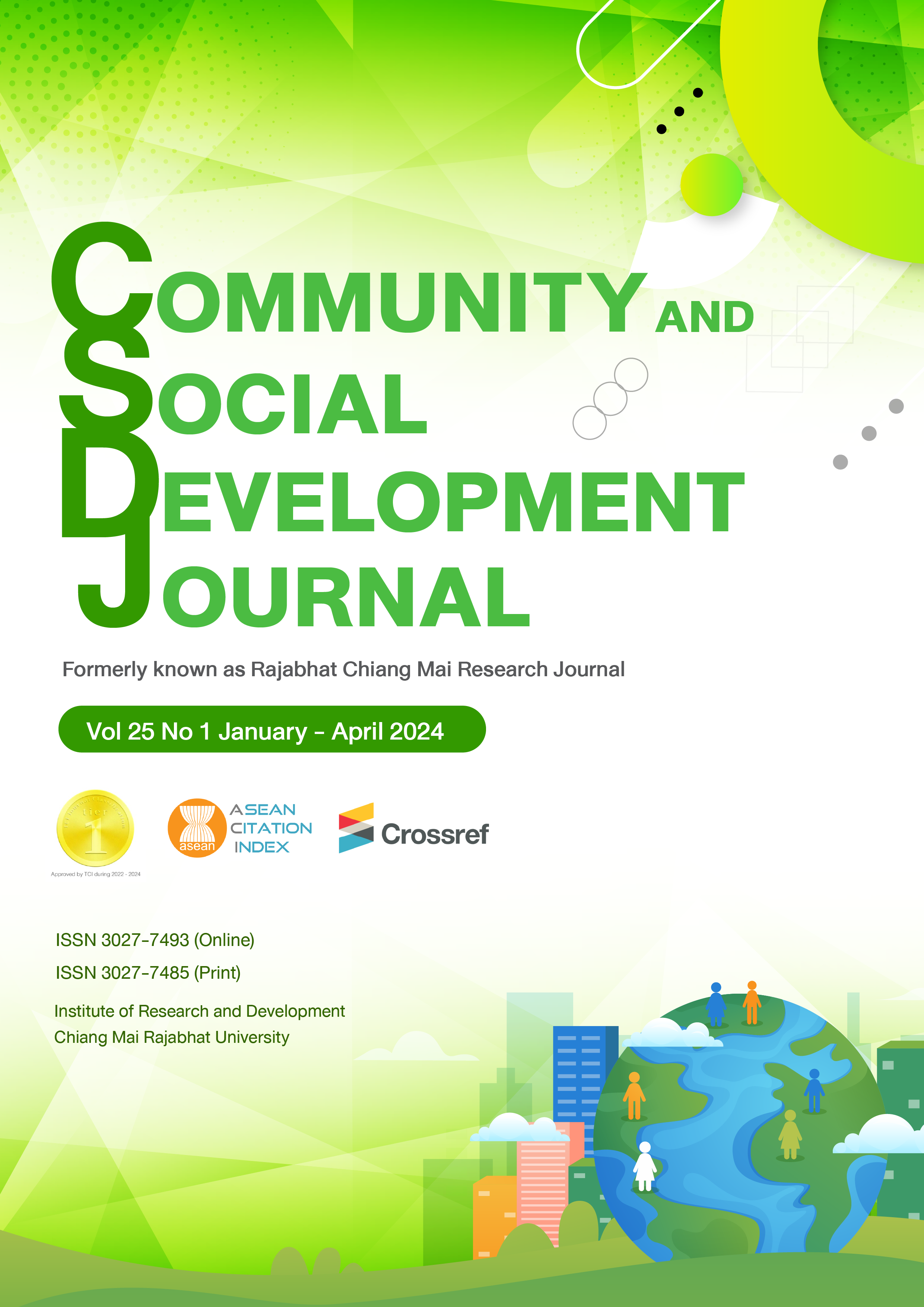Administrative Strategies to Develop Innovators Among Secondary Science Teachers at Saint Gabriel's Foundation, Thailand
DOI:
https://doi.org/10.57260/rcmrj.2024.264815Keywords:
Administrative strategies, Innovators, Science teachersAbstract
The purposes of the research Administrative Strategies to Develop Innovators Among Secondary Science Teachers at Saint Gabriel's Foundation, Thailand were to 1) create administrative strategies, 2) validate suitability and feasibility of administrative strategies to develop innovators among secondary science teachers at Saint Gabriel’s Foundation, Thailand. In this research, a mixed method was applied. The data has been gathered from 11 secondary school directors, 110 staff at the management level and 149 secondary science teachers at Saint Gabriel's Foundation, Thailand in the academic year 2020; there were 270 personnel in total. The tools used to collect the data were questionnaires, interview forms, and focus group forms. The quantitative data was analyzed by using percentage, frequency, mean and standard deviation, whereas content analysis was used to analyze qualitative data.
The results of administrative strategies to develop innovators among secondary science teachers at Saint Gabriel’s Foundation, Thailand consisted of vision, missions, goals, share values and 4 master strategies, 13 minor strategies, 28 measures, and 24 indicators. The master strategies were Strategies 1: Encourage and enhance science teachers to be innovation teachers containing 4 minor strategies, 10 measures, and 10 indicators, Strategies 2: Improve quality of science learning management to create innovation consisting of 3 minor strategies, 6 measures, and 4 indicators, Strategy 3: Create cooperative network for creative innovations containing 3 minor strategies, 7 measures, and 5 indicators, and Strategy 4: Effective management of innovative teachers comprising 3 minor strategies, 5 measures, and 5 indicators. Furthermore, the overview result of accuracy and feasibility validation of administrative strategies to develop innovators among secondary science teachers at Saint Gabriel’s Foundation, Thailand was in high average.
Downloads
References
Aithal, S. (2016). Creating Innovators through setting up organizational Vision, Mission and Core Values: A Strategic Model in Higher Education. International Journal of Management, IT and Engineering, 6(1), 310-324. Retrieved from https://papers.ssrn.com/sol3/papers.cfm?abstract_id=2779177
Chiengkul, W. (2016). Thai Education Conditions 2014/2015 “How to Reform Thai Education to Keep up with the World in the 21st Century”. Bangkok: Pimdeekarnpim, Co., Ltd.
Dechakhup, P., & KhangKhan, P. (2008). Teacher competency, and guidelines for teacher development in the changing societies. Bangkok: Office of the Education Council, Ministry of Education.
Emo, W. (2015). Teachers’ motivations for initiating innovations. J Educ Change. 16, 171–195. Retrieved from https://link.springer.com/article/10.1007/s10833-015-9243-7
Kaewyongphang, P., Manokarn, M., & Yaboonthong, Y. (2021). The Environment and Guidelines of Administration to Develop Innovators Among Secondary Science Teachers at Saint Gabriel’s Foundation, Thailand. Psychology and Education, 58(1), 1738-1743. Retrieved from http://psychologyandeducation.net/pae/index.php/pae/article/view/976
Kaewyongphang, P., Manokarn, M., Yaboonthong, Y., & Puthaprasert, C. (2021). Management strategies to develop innovators among secondary science teachers at Saint Gabriel's foundation, Thailand (Doctoral dissertation, Chiang Mai: Graduate School, Chiang Mai University).
Kittiworapan, P. (2016). Teacher Development Strategies Enhancing Students’ Thinking Skills and Applying Project Techniques. Journal of Education Graduate studies Research, Khon Kaen University, 9(4), 119-127. Retrieved from https://so02.tci-thaijo.org/index.php/EDGKKUJ/article/view/51588/42733
Office of the Education Council. (2013). The Analysis of the Teacher Development Status throughout the System and Suggestions for Teacher Development Guidelines for Learners’ Quality. Bangkok: Office of the Education Council, Ministry of Education.
Office of the Education Council. (2015). Status of Teacher Production and Development in Thailand. Bangkok: Office of the Education Council, Ministry of Education.
Office of the Education Council. (2017). The National Scheme of Education 2017-2036. Bangkok: Office of the Education Council, Ministry of Education.
Office of the Education Council. (2018). Developing a Mechanism to Drive the Production System and Developing High-Performance Teachers for Thailand 4.0. Bangkok: Prick-Wan Graphic.
Office of the Education Council. (2019). National education standards B.E. 2561. Bangkok: Office of the Education Council, Ministry of Education.
Office of the National Economic and Social Development Council. (2016). The Twelfth National Economic and Social Development Plan (2017-2021). Bangkok: Office of the Prime Minister.
Panich, V. (2012). The Way of Learning Construction for Students in the 21st Century. Bangkok: Tathata Publication, Co., Ltd.
Prajan, O., & Chaemchoy, S. (2018). Administrative Model Development Teacher’s Innovative Thinking Skills in the Basic Education School. FEU Academic Review, 12(1), 156-169. Retrieved from https://so01.tci-thaijo.org/index.php/FEU/article/view/89659
Saint Gabriel’s Foundation, Thailand. (2016). Strategic plans of Saint Gabriel’s Foundation,Thailand (2016-2021). Bangkok: Saint Gabriel’s Foundation, Thailand.
Sinlarat, P. (2016). Thai Education 4.0 is More Than Education. Bangkok: ChulalongkornUniversity Printing House.
Downloads
Published
How to Cite
Issue
Section
License
Copyright (c) 2024 Rajabhat Chiang Mai Research Journal

This work is licensed under a Creative Commons Attribution-NonCommercial-NoDerivatives 4.0 International License.
1. Articles, information, content, images, etc published in the “Community and Social Development Journal” are copyrighted by the Community and Social Development Journal, Chiang Mai Rajabhat University. In order to properly distribute the articles through print and electronic media, the authors still hold the copyright for the published articles under the Creative Commons Attribution (CC BY) license, which allows the re-distribution of the articles in other sources. References must be made to the articles in the journal. The authors are responsible for requesting permission to reproduce copyrighted content from other sources.
2. The content of the articles appearing in the journal is the direct responsibility of the article authors. The editorial board of the journal does not necessarily agree with or share any responsibility.














